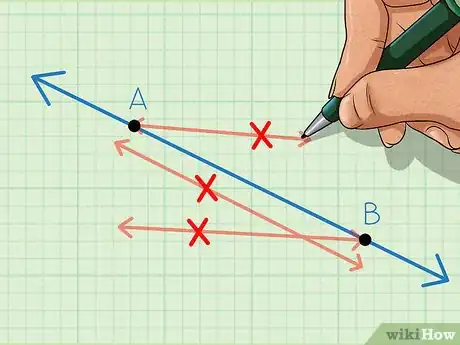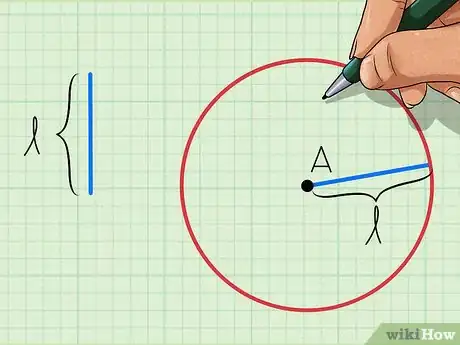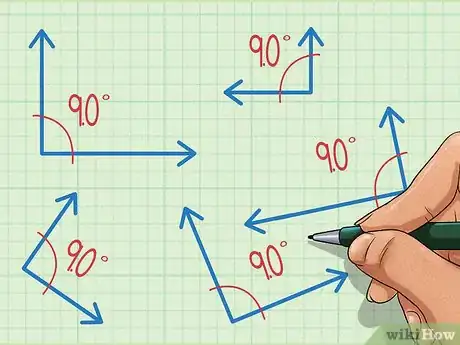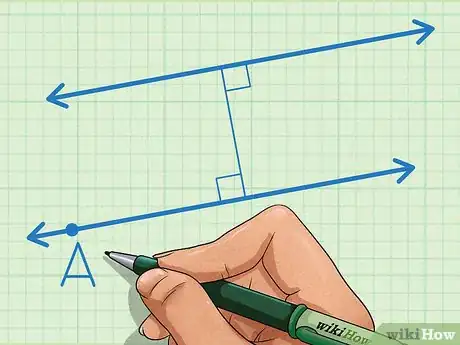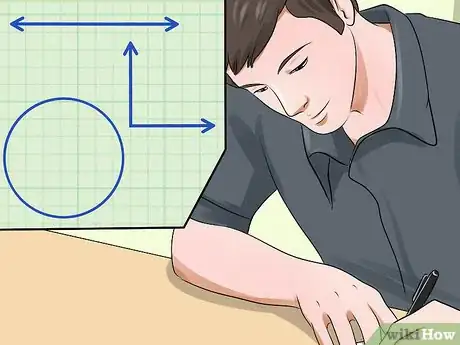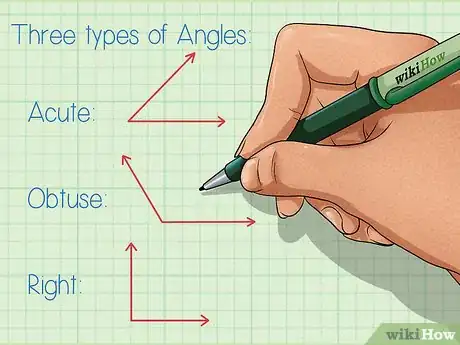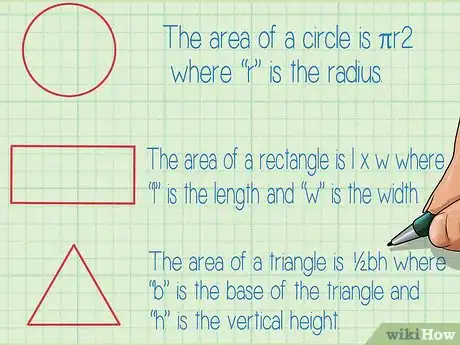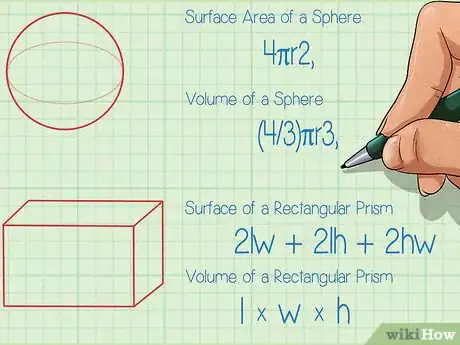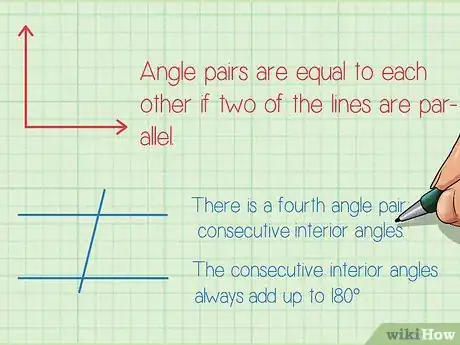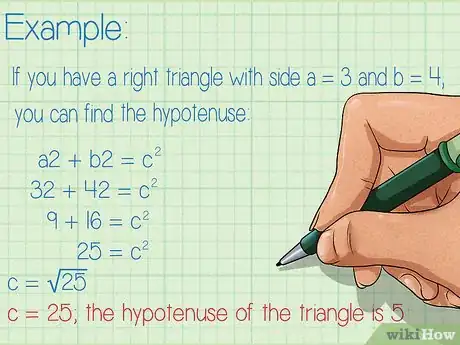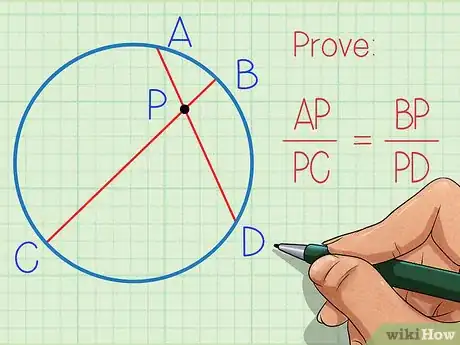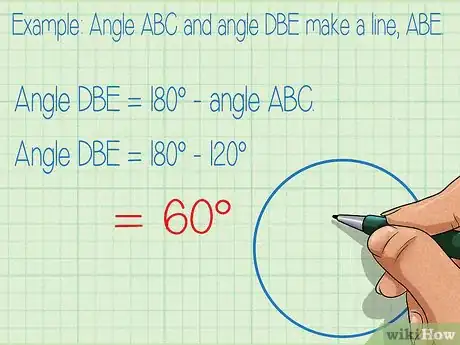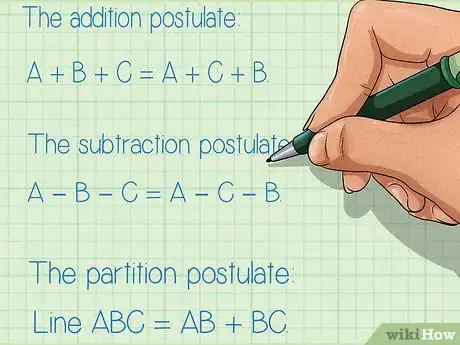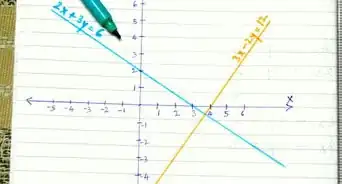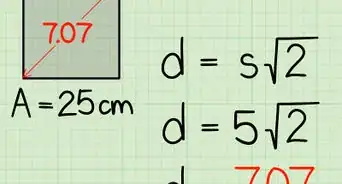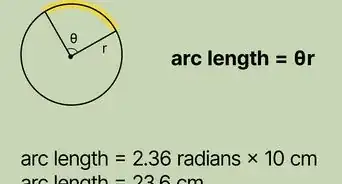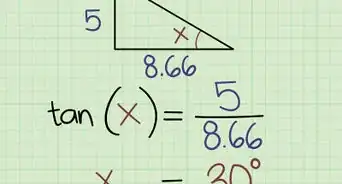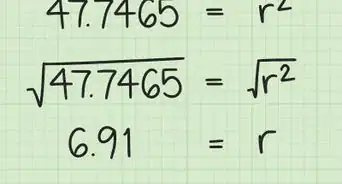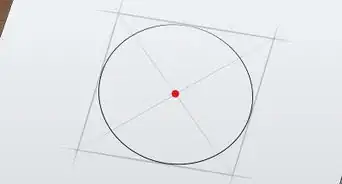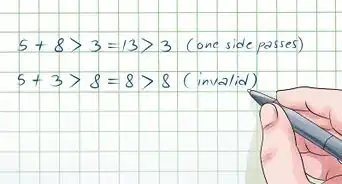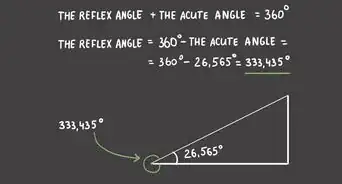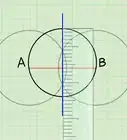This article was co-authored by wikiHow Staff. Our trained team of editors and researchers validate articles for accuracy and comprehensiveness. wikiHow's Content Management Team carefully monitors the work from our editorial staff to ensure that each article is backed by trusted research and meets our high quality standards.
There are 20 references cited in this article, which can be found at the bottom of the page.
This article has been viewed 75,983 times.
Learn more...
Euclidean geometry is all about shapes, lines, and angles and how they interact with each other. There is a lot of work that must be done in the beginning to learn the language of geometry. Once you have learned the basic postulates and the properties of all the shapes and lines, you can begin to use this information to solve geometry problems. Unfortunately, geometry takes time, but if you put in the effort, you can understand it.
Steps
Learning Euclid’s 5 Postulates
-
1Learn postulate 1- A line segment can be formed by joining any two points. If you have two points, A and B, you can draw a line segment connecting those two points. Only one line segment can ever be made by connecting the two points.[1]
-
2Know postulate 2- Any line segment can be extended toward infinity in either direction. Once you have constructed a line segment between two points, you can extend this line segment into a line. You can do this by extending either end of the segment infinitely in the same direction.[2]Advertisement
-
3Understand postulate 3- Given any length and any point, a circle can be drawn with one point as its center and the length as its radius. Stated another way, a circle can be constructed from any line segment. This postulate holds true no matter the length of the line segment.[3]
-
4Identify postulate 4- All right angles are identical. A right angle is equal to 90°. Every single right angle is congruent, or equal. If an angle is not equal to 90°, then it is not a right angle.[4]
-
5Define postulate 5- Given a line and a point, only one line can be drawn through the point that is parallel to the first line. Another way of stating this postulate is to say if two lines intersect with a third line so that the sum of the inner angles of one side is less than two right angles, the two lines will eventually intersect. Those two lines are not parallel to each other.[5]
- This last postulate cannot be proven as a theorem. In non-Euclidean geometry, this “parallel” postulate does not hold true.
Understanding Shapes, Lines, and Angles
-
1Know the properties of lines. A line extends infinitely in either direction and is denoted with arrows on its ends to indicate this. A line segment is finite and only exists between two points. A ray is a hybrid between a line and a line segment: it extends infinitely in one direction from a defined point.[6]
- A single line always has a measure of 180°.
- Two lines are parallel if they have the same slope and never intersect.
- Perpendicular lines are two lines that come together to form a 90° angle.
- Intersecting lines are any two lines that cross each other at any point. Parallel lines can never intersect, but perpendicular lines can.
-
2Learn the different types of angles. There are three types of angles: acute, obtuse, and right. An acute angle is any angle that measure less than 90°. An obtuse angle is a wide angle and is defined as any angle that measures greater than 90°. A right angle measures exactly 90°.[7]
- Being able to identify the various types of angles is an essential part to understanding geometry.
- Two lines that make a right angle are also perpendicular to each other. They form a perfect corner.
- You may also see a straight angle which is simply a line. The measure of this angle is 180°.
- For example: A square or rectangle has four 90° angles while a circle has no angles.
-
3Identify the types of triangles. There are two ways to identify a triangle: by the size of its angles (acute, obtuse, and right) or by how many sides and angles are equal (equilateral, isosceles, and scalene). In an acute triangle, all angles have a measure less than 90°; obtuse triangles have one angle that is greater than 90°; and a right triangle has one 90° angle.[8]
- Equilateral triangles have three equal sides and three angles that all measure exactly 60°.
- Isosceles triangles have two equal sides and two equal angles.
- Scalene triangles have no equal sides and no equal angles.
-
4Know how to determine perimeter and area of 2D shapes. Squares, rectangles, circles, triangles, etc. are all shapes that you will need to know how to calculate perimeter and area for. The perimeter of an object is the measure of all of the sides of the object while the area is the measure of the amount of space the object takes up.[9] [10] The equations for perimeter and area for the most common shapes are:[11]
- The perimeter of a circle is called the circumference and is equal to 2πr where “r” is the radius.
- The area of a circle is πr2 where “r” is the radius.
- The perimeter of a rectangle is 2l + 2w where “l” is the length and “w” is the width.
- The area of a rectangle is l x w where “l” is the length and “w” is the width.
- The perimeter of a triangle is a + b + c where each variable denotes one side of the triangle.
- The area of a triangle is ½bh where “b” is the base of the triangle and “h” is the vertical height.
-
5Calculate surface area and volume of 3D objects. Just as you can calculate perimeter and area of a 2D object, you can find the total surface are and volume of a 3D object. Objects such as spheres, rectangular prisms, pyramids, and cylinders all have special equations to do this. The surface area is the total area of every surface of the object while the volume is the total amount of space that object occupies.[12] [13]
- The surface area of a sphere is equal to 4πr2, where “r” is the radius of the sphere.
- The volume of a sphere is equal to (4/3)πr3, where “r” is the radius of the sphere.
- The surface area of a rectangular prism is 2lw + 2lh + 2hw, where “l” is the length, “w” is the width, and “h” is the height.[14]
- The volume of the rectangular prism is l x w x h, where “l” is the length, “w” is the width, and “h” is the height.[15]
-
6Identify angle pairs. When a line intersects two other lines, it is called a transversal. Angle pairs are formed by these lines.[16] Corresponding angles are the two angles in matching corners against the transversal.[17] Alternate interior angles are the two angles that are inside the two lines but on opposite sides of the transversal.[18] Alternate exterior angles are the two angles that are outside of the two lines, but on opposite sides of the transversal.[19]
- Angle pairs are equal to each other if two of the lines are parallel.[20]
- There is a fourth angle pair: consecutive interior angles. These are the two angles on the inside of the lines and on the same side of the transversal. When the two lines are parallel, the consecutive interior angles always add up to 180°.[21]
-
7Define the Pythagorean Theorem. The Pythagorean Theorem is a handy way to determine the lengths of the sides of a right triangle. It is defined as a2 + b2 = c2, where “a” and “b” are the length and height (straight lines) of the triangle and “c” is the hypotenuse (angled line). If you know any two sides of a triangle, you can calculate the third side with this equation.[22]
- For example: If you have a right triangle with side a = 3 and b = 4, you can find the hypotenuse:
- a2 + b2 = c2
- 32 + 42 = c2
- 9 + 16 = c2
- 25 = c2
- c = √25
- c = 25; the hypotenuse of the triangle is 5.
Solving Geometry Problems
-
1Draw the figures. Read through the problem and sketch a diagram to illustrate it. Label all of the given information including all angles, lines that are parallel or perpendicular, and lines that intersect. You may need to draw everything a second time after you have a basic sketch of the problem. The second drawing can fix the scale of everything and make sure all angles are drawn approximately correctly.[23]
- Label all of the unknowns as well.
- A clearly drawn diagram is the easiest way to understand the problem.
-
2Make observations based on the givens. If you are given a line segment, but there are angles coming out of the line segment, you know that the measure of all the angles must sum to 180°. Write this information on the diagram or in the margins. This a good way to think about what the question is asking.
- For example: Angle ABC and angle DBE make a line, ABE. Angle ABC = 120°. What is the measure of angle DBE?
- Since the sum of angle ABC and DBE must equal 180°, then angle DBE = 180° - angle ABC.
- Angle DBE = 180° - 120° = 60°.
-
3Apply basic theorems to answer questions. There are many individual theorems that describe the properties of triangles, intersecting and parallel lines, and circles that can be used to solve a problem. Identify the geometric shapes in the problem and find the theorems that apply. Use old proofs and problems as a guide to see if there are similarities between them. Here are some of the general geometric theorems you will need:
- The reflexive property: A variable is equal to itself. x = x.
- The addition postulate: When equal variables are added to equal variables, all of the sums are equal. A + B + C = A + C + B.
- The subtraction postulate: This is similar to the addition postulate, all variables subtracted from equal variables have equal differences. A – B – C = A – C – B.
- The substitution postulate: If two quantities are equal, you may substitute one for the other in any expression.
- The partition postulate: any whole is equal to the sum of all of its parts. Line ABC = AB + BC.
-
4Learn the theorems that apply to triangles. Many problems in geometry will have triangles and knowing the properties of triangles will help you solve them. Use these theorems to form geometric proofs. Here are a few of the most important ones for triangles:[24]
- CPCTC: corresponding parts of the congruent triangle are congruent
- SSS: side-side-side: if three sides of one triangle are congruent to three sides of a second triangle, then the triangles are congruent
- SAS: side-angle-side: if two triangles have a congruent side-angle-side, then the two triangles are congruent
- ASA: angle-side-angle: if two triangles have a congruent angle-side-angle, then the two triangles are congruent
- AAA: angle-angle-angle: triangles with congruent angles are similar, but not necessarily congruent
Community Q&A
-
QuestionHow do I prove postulate 2?
 DonaganTop AnswererPostulates are not subject to proof in any practical sense. They are merely commonly agreed-upon statements.
DonaganTop AnswererPostulates are not subject to proof in any practical sense. They are merely commonly agreed-upon statements. -
QuestionHow do I prove a shape is a parallelogram?
 DonaganTop AnswererAssume the figure has four sides. There are several ways to prove it's a parallelogram. The three simplest ways are: (1) prove that each side is equal in length to its opposite side; (2) prove that each angle is equal to its opposite angle; and (3) prove that opposite sides are parallel to each other.
DonaganTop AnswererAssume the figure has four sides. There are several ways to prove it's a parallelogram. The three simplest ways are: (1) prove that each side is equal in length to its opposite side; (2) prove that each angle is equal to its opposite angle; and (3) prove that opposite sides are parallel to each other.
References
- ↑ http://mathworld.wolfram.com/EuclidsPostulates.html
- ↑ http://mathworld.wolfram.com/EuclidsPostulates.html
- ↑ http://mathworld.wolfram.com/EuclidsPostulates.html
- ↑ http://mathworld.wolfram.com/EuclidsPostulates.html
- ↑ http://mathworld.wolfram.com/EuclidsPostulates.html
- ↑ https://www.mathsisfun.com/geometry/line.html
- ↑ http://www.mathsisfun.com/angles.html
- ↑ http://www.mathsisfun.com/triangle.html
- ↑ https://www.mathsisfun.com/geometry/perimeter.html
- ↑ https://www.mathsisfun.com/geometry/area.html
- ↑ http://www.mathsisfun.com/area.html
- ↑ https://www.mathsisfun.com/definitions/surface-area.html
- ↑ https://www.mathsisfun.com/definitions/volume.html
- ↑ https://flexbooks.ck12.org/cbook/ck-12-interactive-middle-school-math-7-for-ccss/section/6.5/related/lesson/surface-area-of-rectangular-prisms-msm7/
- ↑ https://www.khanacademy.org/math/cc-fifth-grade-math/5th-volume/volume-word-problems/a/volume-of-rectangular-prisms-review
- ↑ https://flexbooks.ck12.org/cbook/ck-12-middle-school-math-concepts-grade-8/section/6.1/primary/lesson/identify-angle-pairs-msm8/
- ↑ http://www.mathsisfun.com/geometry/corresponding-angles.html
- ↑ http://www.mathsisfun.com/geometry/alternate-interior-angles.html
- ↑ http://www.mathsisfun.com/geometry/alternate-exterior-angles.html
- ↑ http://www.mathsisfun.com/geometry/parallel-lines.html
- ↑ http://www.mathsisfun.com/geometry/consecutive-interior-angles.html
- ↑ https://mathworld.wolfram.com/PythagoreanTheorem.html
- ↑ http://www.homeschoolmath.net/teaching/geometry-2.php
- ↑ http://www.mathwarehouse.com/geometry/congruent_triangles/
